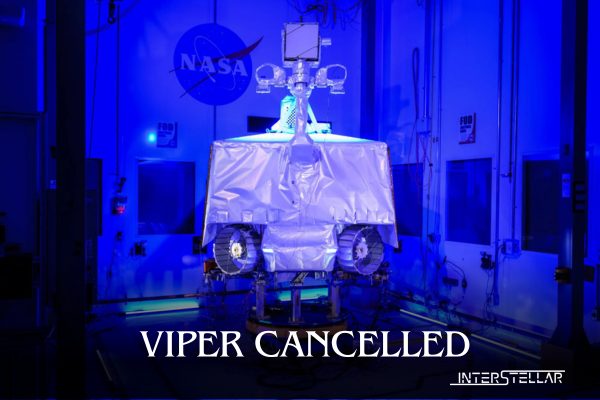NASA Ends VIPER Lunar Rover Project Due to Costs and Delays
Following a comprehensive internal review, NASA ends Viper mission, it announced on Wednesday its decision to discontinue the development of the VIPER (Volatiles Investigating Polar Exploration Rover) project.
Reasons for Cancellation
NASA cited several reasons for the cancellation, including cost increases, delays to the launch date, and the risks of further cost growth. Originally, the VIPER rover was set to launch in late 2023. However, in 2022, NASA requested a delay to late 2024 to allow more time for preflight testing of the Astrobotic lander. Subsequent schedule and supply chain delays pushed VIPER’s readiness date to September 2025. Additionally, its Commercial Lunar Payload Services (CLPS) launch aboard Astrobotic’s Griffin lander was delayed to a similar timeframe. Continuing the VIPER project would have resulted in increased costs that could threaten other CLPS missions. NASA has notified Congress of the agency’s decision.
Utilising VIPER’s Technology
“We are committed to studying and exploring the Moon for the benefit of humanity through the CLPS program,” said Nicola Fox, associate administrator, Science Mission Directorate, NASA Headquarters in Washington. NASA has a range of missions planned to search for ice and other resources on the Moon over the next five years. The agency will maximise the use of the technology and work invested in VIPER while preserving critical funds to support a robust lunar portfolio.
Moving forward, NASA plans to disassemble and reuse VIPER’s instruments and components for future Moon missions. Before disassembly, NASA will consider expressions of interest from U.S. industry and international partners for using the existing VIPER rover system at no cost to the government. Interested parties should contact HQ-CLPS-Payload@mail.nasa.gov after 10 a.m. EDT on Thursday, July 18. The project will conduct an orderly closeout through spring 2025.
Future Plans
Astrobotic will continue its Griffin Mission One under its contract with NASA, aiming for a launch no earlier than fall 2025. Although VIPER will not be part of the mission, the landing will demonstrate the Griffin lander and its engines.
NASA will explore alternative methods to achieve many of VIPER’s goals, such as verifying the presence of ice at the lunar South Pole. A future CLPS delivery, the Polar Resources Ice Mining Experiment-1 (PRIME-1), is scheduled to land at the South Pole in the fourth quarter of 2024. PRIME-1 will search for water ice and demonstrate resource utilisation using a drill and mass spectrometer to measure the volatile content of subsurface materials.
Future crewed missions, including the Lunar Terrain Vehicle, will allow mobile observations of volatiles across the south polar region. These missions will provide access for astronauts to the Moon’s permanently shadowed regions for dedicated sample return campaigns. NASA will also use copies of three of VIPER’s four instruments for future Moon landings on separate flights.
NASA’s Commitment to Lunar Exploration
The VIPER rover was designed to search Earth’s Moon for ice and other potential resources, supporting NASA’s commitment to studying the Moon and unraveling some of the greatest mysteries of our solar system. Through NASA’s lunar initiatives, including Artemis human missions and CLPS, the agency is exploring more of the Moon than ever before using highly trained astronauts, advanced robotics, U.S. commercial providers, and international partners.





